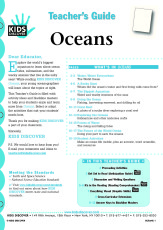It begins about 10,000 years ago, toward the end of the Ice Age. A group of tiny organisms called coral polyps dies. The animals, which had attached themselves to the ocean floor near the shoreline, leave behind their hard, limestone skeletons. These, in turn, form a base for the next generation of polyps. And on and on. Today — billions of polyps later — that limestone floor has grown to support the world’s largest structure made by living organisms.
You may have heard of it. It is one of the seven natural wonders of the world. Its name — the Great Barrier Reef.

Of course, the Great Barrier Reef is not the only coral reef on Earth. These living, growing, changing structures thrive in waters within a 30-degree band north and south of the Equator. But you won’t find them just anywhere within this band. Coral polyps are very “particular” about their environment:
The water must be shallow.
The weather must be sunny.
There must be very few nutrients in the vicinity.
Water with few nutrients? It seems to make no sense…. Every science book tells you that animals don’t produce their own food; they get food from their environment. So how can an animal thrive in an environment that’s poor in nutrients?
Coral polyps have a very particular way of thriving.
The “very particular way” has to do with symbiosis. Symbiosis is an interdependence, or close association, between two organisms. In a symbiotic relationship, both organisms benefit.
Coral polyps have a symbiotic relationship with tiny plant-like organisms called zooxanthellae (ZOH-uh-zan-THEL-ee).
Zooxanthellae live in the cells of the polyp where they have access to sunlight. The zooxanthellae use the light to perform photosynthesis and produce food, which is shared with the coral. That’s the symbiosis: The zooxanthellae get sunlight and protection; the coral polyps get food. Everybody wins.
If the water was too deep or clouded with nutrients, sunlight wouldn’t reach the coral. The zooxanthellae would not be able to perform photosynthesis and produce food, and neither the zooxanthellae nor the coral would be able to survive.
Coral polyps live in colonies. While the individuals in a colony may be tiny, a colony can grow quite large and weigh many tons. Let’s have a look at colonies of different types of coral. The array of shapes and colors is pretty amazing.





The formation of a coral reef is painstakingly slow. It begins, as it did with the Great Barrier Reef, when coral polyps attach themselves to hard surfaces at the edge of an island or other landform. During the next several thousand years, the colony grows and expands to form a fringing reef along the shoreline.
If conditions are right, the reef continues to expand — slowly, slowly, slowly. Over the course of time, sea levels may rise and the land that the reef originally fringed may sink. As the land sinks, a lagoon takes shape beside it. The lagoon separates the land from the reef, which is now called a barrier reef.

Time continues to pass: 20,000, 100,000, 1 million, 10 million, 30 million years. Over this eternity of time, sea levels rise and fall. Eventually, the land may sink completely out of sight, leaving only the reef near the water’s surface. The reef now encircles a lagoon where land once jutted out. The reef is no longer a barrier reef; it is an atoll.
Whether an atoll, a barrier reef, or a fringing reef, these structures are home to a huge number of creatures: seabirds, sponges, jellyfish, starfish, shrimp, rays, snails, crabs, lobsters, sea turtles, and sea snakes, to name just a few. Coral reefs represent less than 1 percent of the ocean floor, but are home to almost one-quarter of all marine animals. According to the National Ocean Service, reefs may be habitats for millions of species that haven’t even been identified yet!



Coral reefs help protect neighboring shorelines from the effects of extreme wave action. They also protect coastal wetlands and prevent erosion. As you read this article, research is taking place to develop medicines from the plants and animals of the reef. A few have already been developed, including drugs that fight several forms of cancer.
Despite their importance, coral reefs are under threat. Overfishing, industrial runoff, sewage, agricultural waste, and erosion due to land clearing all pose dangers to these sensitive ecosystems. Damaging fishing techniques, such as blast fishing, which uses powerful explosives to startle fish out of hiding, are another hazard.
Marine Protected Areas, or MPAs, have become important in protecting and managing coral reefs and their inhabitants. In addition, marine parks, such as the Great Barrier Reef Marine Park, have been established expressly to protect reefs.
Efforts are also underway to restore damaged reefs through coral farming — growing polyps in nurseries and then planting them on an existing reef. Scientists working through the Nature Conservancy, a not-for-profit organization dedicated to conserving “the lands and waters on which all life depends,” have developed coral farms off the coast of Florida and among the U.S. Virgin Islands.
In addition, there are now artificial surfaces to promote the growth of new reefs. Called reef balls, these hollow spheres are made of concrete specially designed to attract coral and other marine organisms.



Today, over 50,000 reef balls are in place around the world…. But don’t hold your breath waiting for one to become the next Great Barrier Reef. Even with a head start, it’ll be quite some time.
Written by Marjorie Frank. [wp-simple-survey-10]